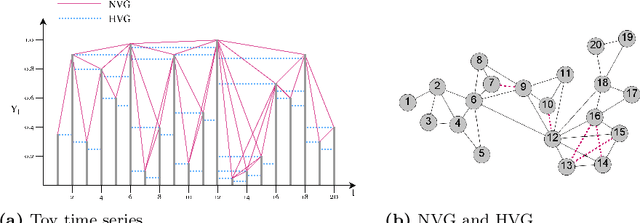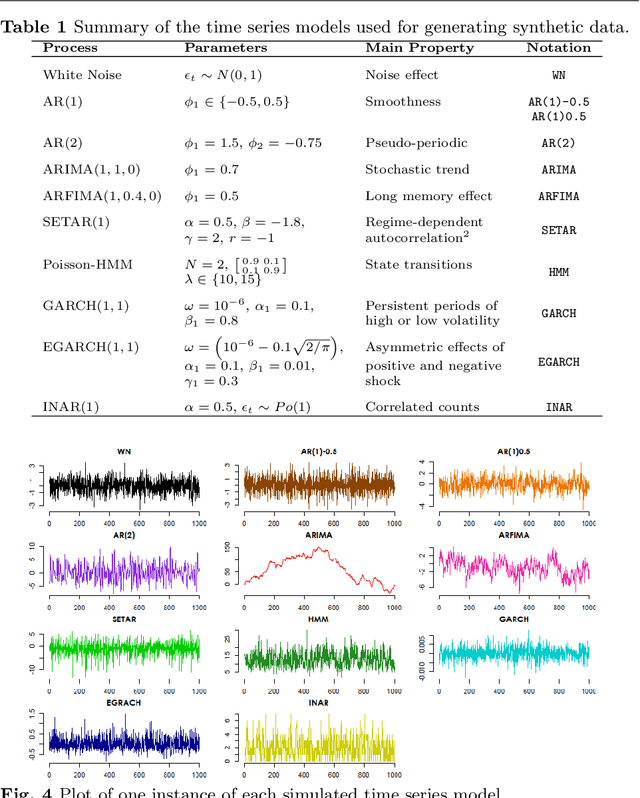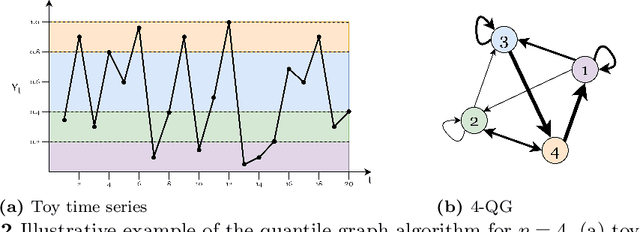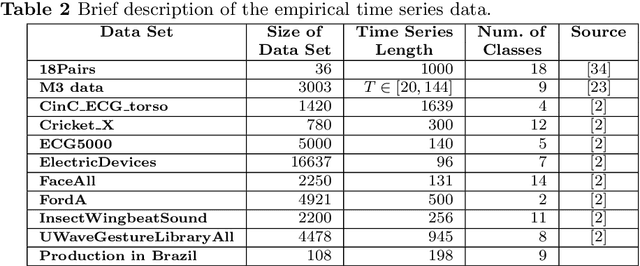Novel Features for Time Series Analysis: A Complex Networks Approach
Paper and Code
Oct 11, 2021



Time series data are ubiquitous in several domains as climate, economics and health care. Mining features from these time series is a crucial task with a multidisciplinary impact. Usually, these features are obtained from structural characteristics of time series, such as trend, seasonality and autocorrelation, sometimes requiring data transformations and parametric models. A recent conceptual approach relies on time series mapping to complex networks, where the network science methodologies can help characterize time series. In this paper, we consider two mapping concepts, visibility and transition probability and propose network topological measures as a new set of time series features. To evaluate the usefulness of the proposed features, we address the problem of time series clustering. More specifically, we propose a clustering method that consists in mapping the time series into visibility graphs and quantile graphs, calculating global topological metrics of the resulting networks, and using data mining techniques to form clusters. We apply this method to a data sets of synthetic and empirical time series. The results indicate that network-based features capture the information encoded in each of the time series models, resulting in high accuracy in a clustering task. Our results are promising and show that network analysis can be used to characterize different types of time series and that different mapping methods capture different characteristics of the time series.
 Add to Chrome
Add to Chrome Add to Firefox
Add to Firefox Add to Edge
Add to Edge